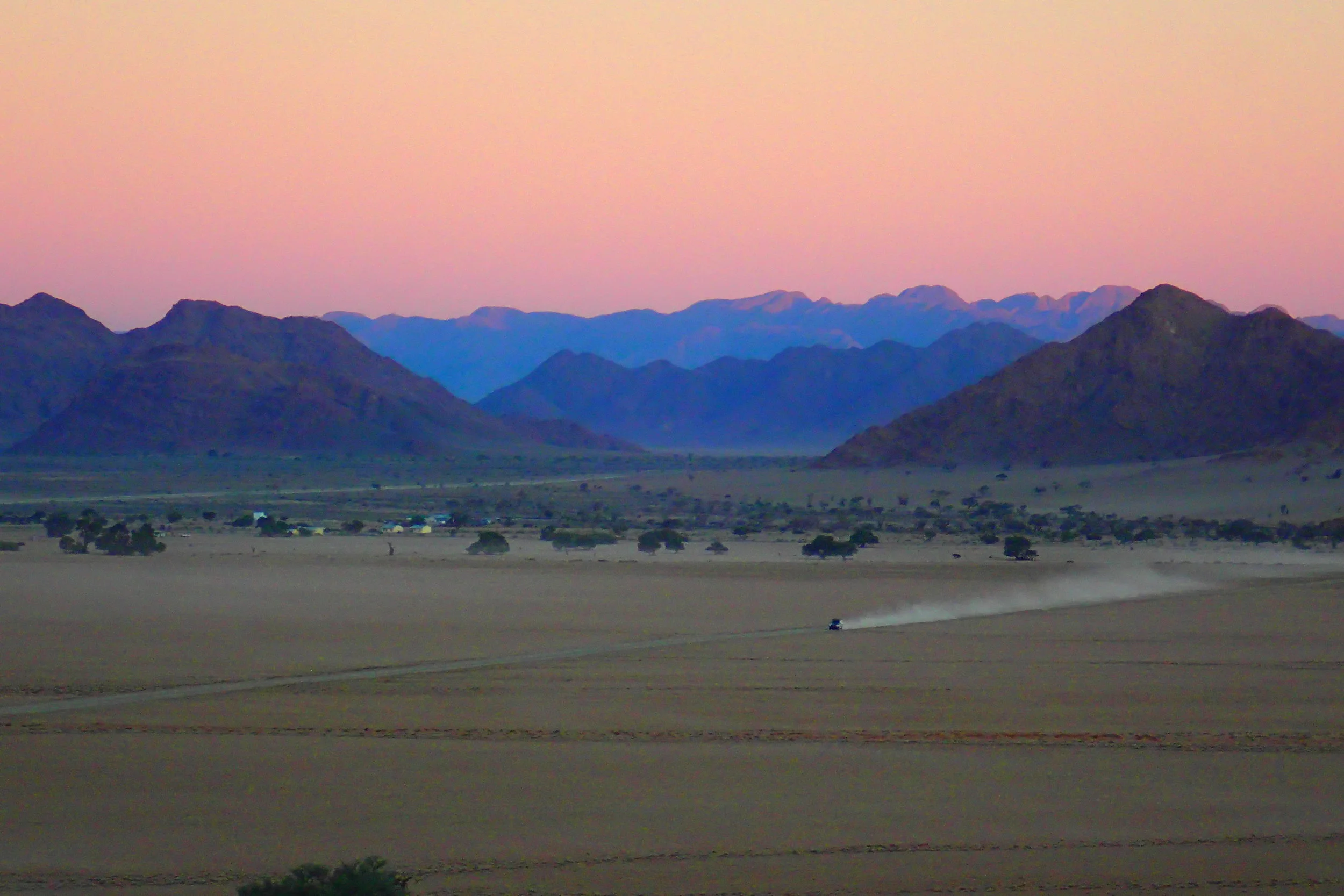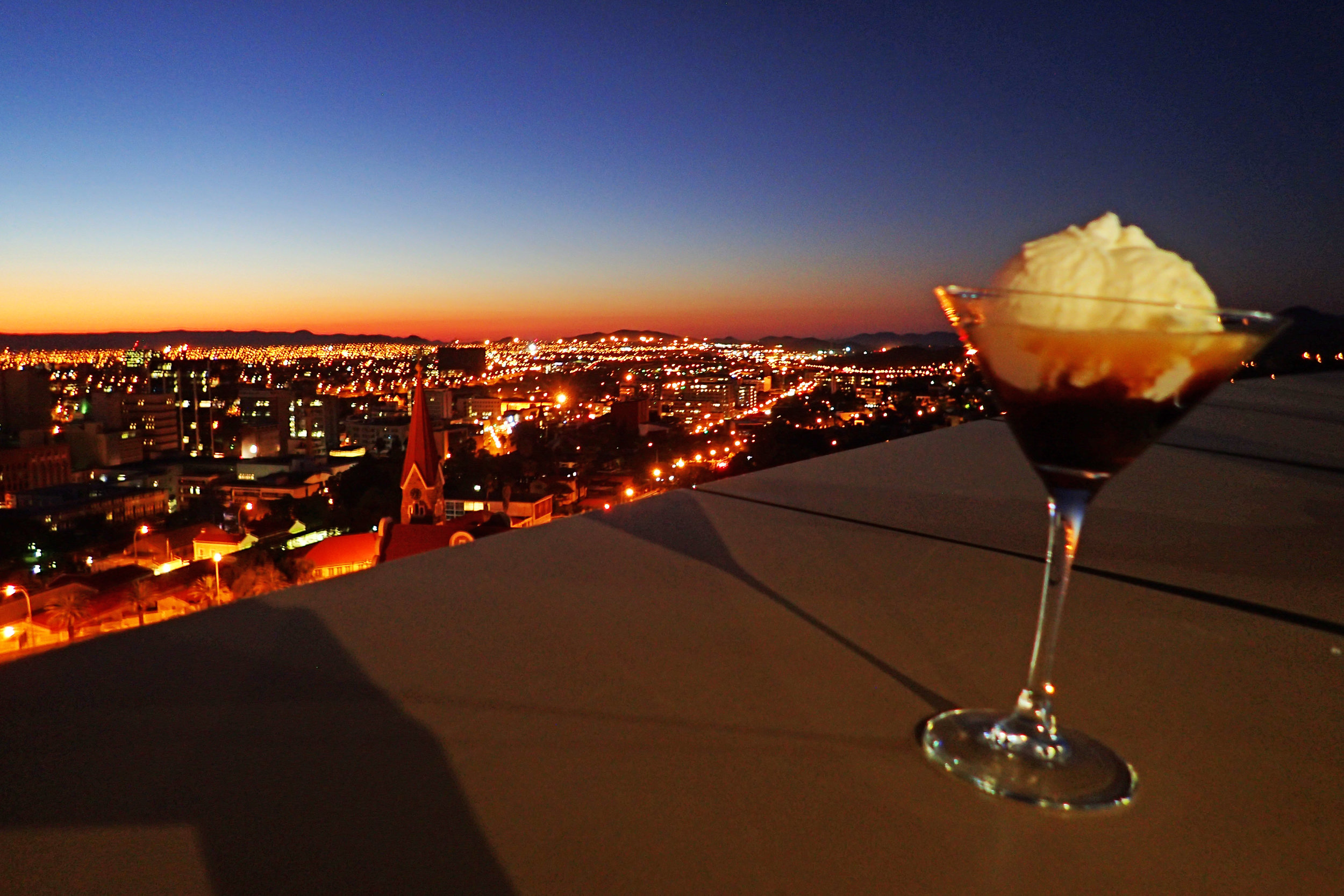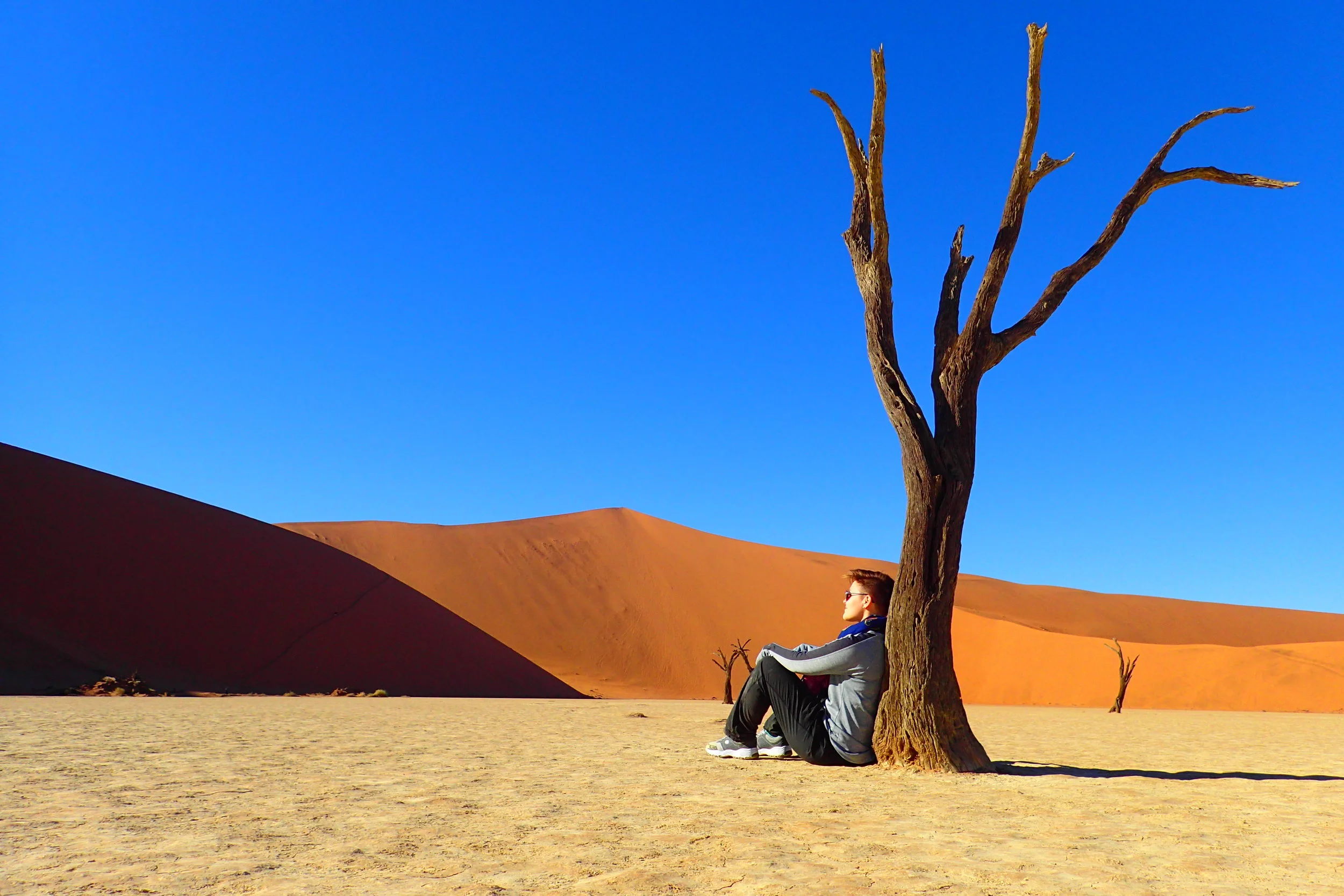When I travel, I am often pulled to a destination by one feature and then, once I'm there, I fall in love with so much more.
By lunchtime, I had seen what I came to the Namib Desert to see: the Sossusvlei region. So what was there left to see? I quickly learned that the Namib desert has much more to offer than Sossusvlei. I spent my final 24 hours in the Namib desert viewing fantastic scenery and incredible wildlife.
In the morning, I climbed Dune 45 and photographed the sun-scorched trees of Deadvlei. Now, I would scale the walls of a deep canyon. I would spot Namibia's national animal and observe a family of baboons. And I would end my visit to the Namib desert by admiring its shifting colors at sunrise and sunset.
Desert Viewpoint
At the hottest point of the day, Tracey, Liza, and I drove the main road back toward Sesriem camp. There are a few places along this route where we could legally drive off the road for an alternative view.
We stopped at one point just before the Tsauchab River. If we hadn't had enough of dead trees from the morning, there was another, half-fallen tree there begging for a photo.
Immediately after the Tsauchab River is a viewpoint. We pulled the car onto a dirt path leading to a raised area that overlooks the region.
It's a beautiful view.
Note that if you're looking for a flowing river, you won't find it! The Tsauchab River is dry.
It was not always dry and it still briefly holds water after it rains. Rain is not common in the Namib-Naukluft desert. Strangely, it had rained only 6 days before I arrived so the area had more greenery than usual. This was a rare sight to see, as rumors suggested it hadn't rained in the 8 years before!
Antelope
There was also much wildlife to see along the route between Sesriem and Sossusvlei. We spotted several little springbok, which are a kind of small antelope.
I also got to see a few oryx, or gemsbok.
The gemsbok is Namibia's national animal—it appears on their coat of arms. The gemsbok are a large antelope with beautiful markings and striking antlers. They kind of look like they're wearing socks or pants and have war paint on their faces.
I love the markings of the oryx. They are so beautiful especially when they walk with the dunes as a contrasting backdrop—a famous Namibian postcard!
Sesriem Canyon
In the Namib Desert is Sesriem Canyon. This is one of the other major attractions in the region after Sossusvlei. It's worth taking an hour or so to climb down inside and walk around the bottom of it.
I chose to climb parts to see it from a different vantage point.
Tsauchab River carved out the canyon millions of years ago. While it is mostly dry, the canyon does still hold water in some parts. It is the only year round source of water in the area.
Ses means six and riem means straps in Afrikaans. This was the number of straps it took for early explorers to reach a bucket to the water in the bottom of the canyon.
Baboon Family
Tracey mentioned that baboons lived in the caves and crevices in the walls of Sesriem Canyon. They weren't around while we were walking through, but I did spot them as we were leaving!
As the sun was descending, baboons came home from a day scavenging for food. A massive group of baboons were across the canyon on the opposite side of the parking lot. I could clearly identify the big alpha male. There were several very young baboons, too.
Here's a short video of them as they made progress back to their home for the night.
Elim Dunes
After our Sesriem Canyon adventure, we drove the dirt road to Elim Dunes. These dunes were the backdrop to our campsite! They are great for viewing the desert sunset.
The only challenge is climbing them to get there. I was already tired from climbing Dune 45 that morning! While Liza hilariously gave up rather quickly...
...I managed to make it up to one of the lower dunes for some good views.
When we were approaching the parking spot for the dunes, I spotted something big black and moving in the distance. It was a wildebeest! This would be my first of many wildebeest sightings—but not until my trip to South Africa's Kruger National Park. I was so excited!
It was strange to see this wildebeest separated from its herd. Was it hurt? Old? Sick? We couldn't determine what was wrong with it. It seemed perfectly fine—it was merrily rolling around in the dust for awhile!
From the top of the dunes, I watched the wildebeest trot off into the sunset.
Camp Sunrise
The next morning I woke up—wide awake at 5AM.
The sun was not up yet, so I decided to watch it rise. I put on my sneakers and took off across the desert field next to the campsite, camera in hand.
I looked down at the ground as I walked, noting all the different footprints. The night before, I asked Tracey if I could walk out into the open field to see the stars better. I wanted to get away from the campsite lights. But she warned against it, "You can if you want to get eaten!"
At night, all the creatures—harmless and not so harmless—come out to play. There were springbok, wildebeest, oryx, nyala, wild dog, and even hyena prints all over. Criss-crossing this way and that way, the prints zigged and zagged across the desert plain.
And now there were my sneaker prints among them!
I made my way to an interesting looking camel thorn tree about 200 meters out. From there, I admired the moon setting behind me and the sun rising behind the Naukluft Mountains in front of me.
Goodbye Namib Desert
I sat there on that branch, sun warming my face, reflecting on my adventure to the Namib Desert. Barren and lifeless to some, I see this region as one of the most beautiful in all my travels. Whether it's the indigenous west coast of southern New Zealand or the windswept dunes of Namibia, there's nothing like Earth's barely touched natural landscapes.
And now this part of my adventure was coming to a close. Soon, Tracey and Liza would be waking up. And I would be returning to Windhoek to experience the life of a Namibian city dweller!




